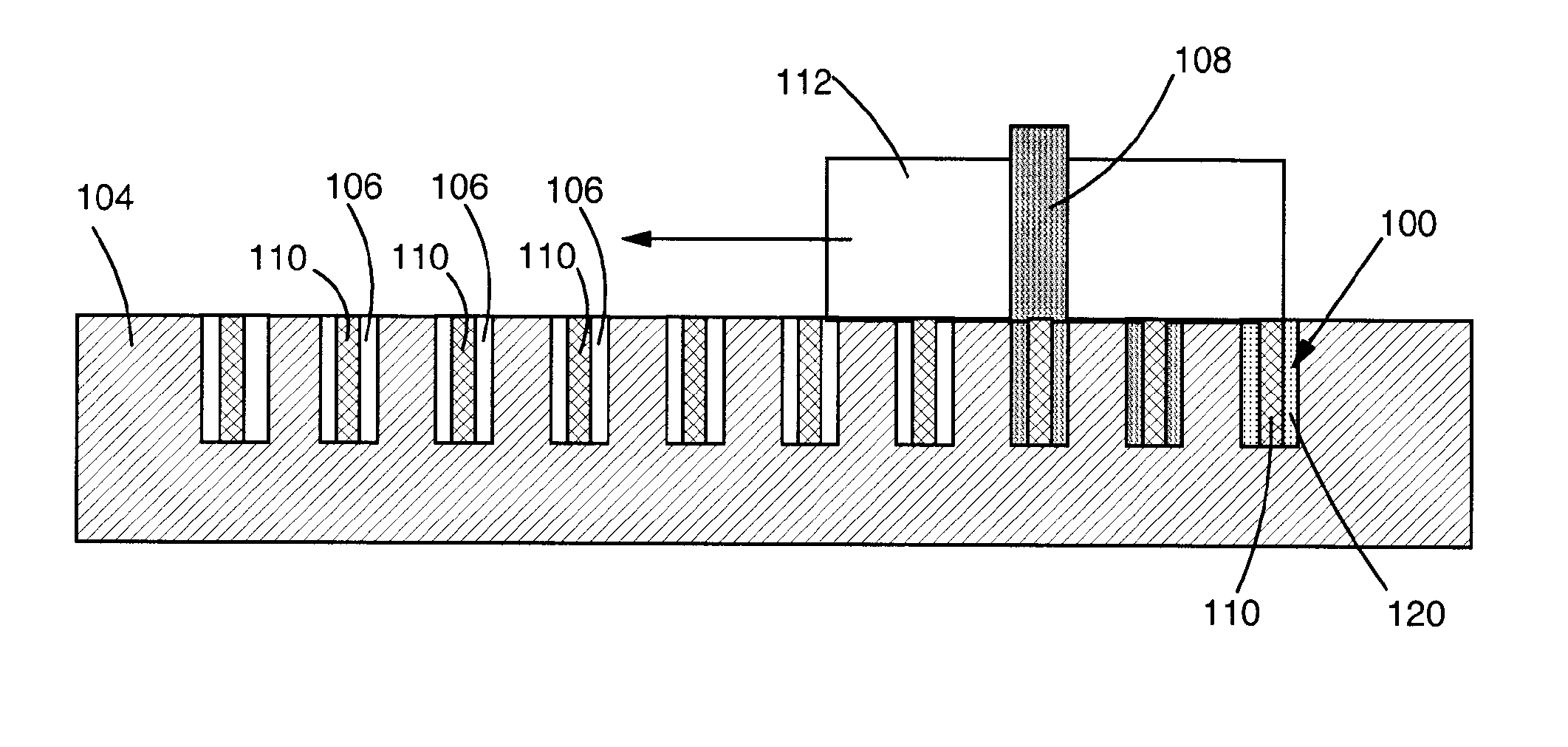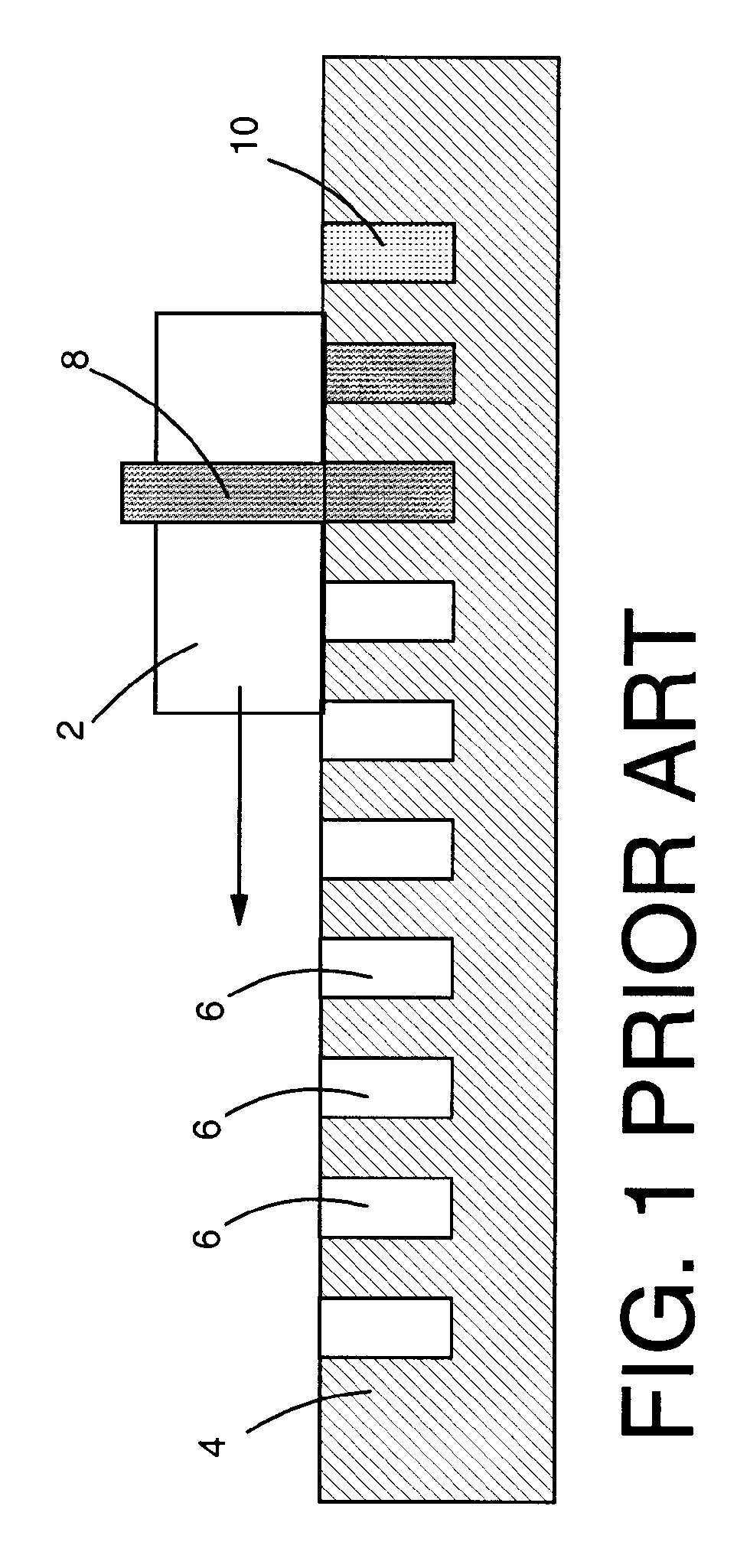Composite interconnect structure using injection molded solder technique
a technology of composite interconnect structure and solder, which is applied in the direction of non-conductive materials with dispersed conductive materials, metal/alloy conductors, and conductors. it can solve the problems of inability to form composite interconnect structures, difficult process, and particular interconnect structures that do not achieve all the possible advantages
- Summary
- Abstract
- Description
- Claims
- Application Information
AI Technical Summary
Benefits of technology
Problems solved by technology
Method used
Image
Examples
Embodiment Construction
[0017] Turning to the drawings, FIGS. 2-3 show one embodiment of a method of forming a composite interconnect structure 100 on at least one of a substrate 102 (FIG. 3 only) and a semiconductor device 130 (FIG. 3 only) prior to packaging. In a first step, shown in FIG. 1, a mold 104 is provided having at least one opening 106 formed therein. As shown, mold 104 typically includes a plurality of openings 106. Each opening 106 includes a member 110 of a material dissimilar to a solder 108 (shown molten in FIG. 2) to be used to fill a remainder of each opening. Next, as also shown in FIG. 2, the remainder of each opening 106 is filled (injected) with a molten solder 108 using any now known or later developed molten solder injection device 112. As known to those with skill in the art, this step typically includes bringing molten solder injection device 112 into close proximity to mold 104 and injecting molten solder 108 into each opening 106. In this case, only the portion of each opening...
PUM
| Property | Measurement | Unit |
|---|---|---|
| oblong shape | aaaaa | aaaaa |
| optical structure | aaaaa | aaaaa |
| electrical conductivity | aaaaa | aaaaa |
Abstract
Description
Claims
Application Information
 Login to View More
Login to View More - R&D
- Intellectual Property
- Life Sciences
- Materials
- Tech Scout
- Unparalleled Data Quality
- Higher Quality Content
- 60% Fewer Hallucinations
Browse by: Latest US Patents, China's latest patents, Technical Efficacy Thesaurus, Application Domain, Technology Topic, Popular Technical Reports.
© 2025 PatSnap. All rights reserved.Legal|Privacy policy|Modern Slavery Act Transparency Statement|Sitemap|About US| Contact US: help@patsnap.com



